The Sufi Women Whirling Dervishes Of Istanbul
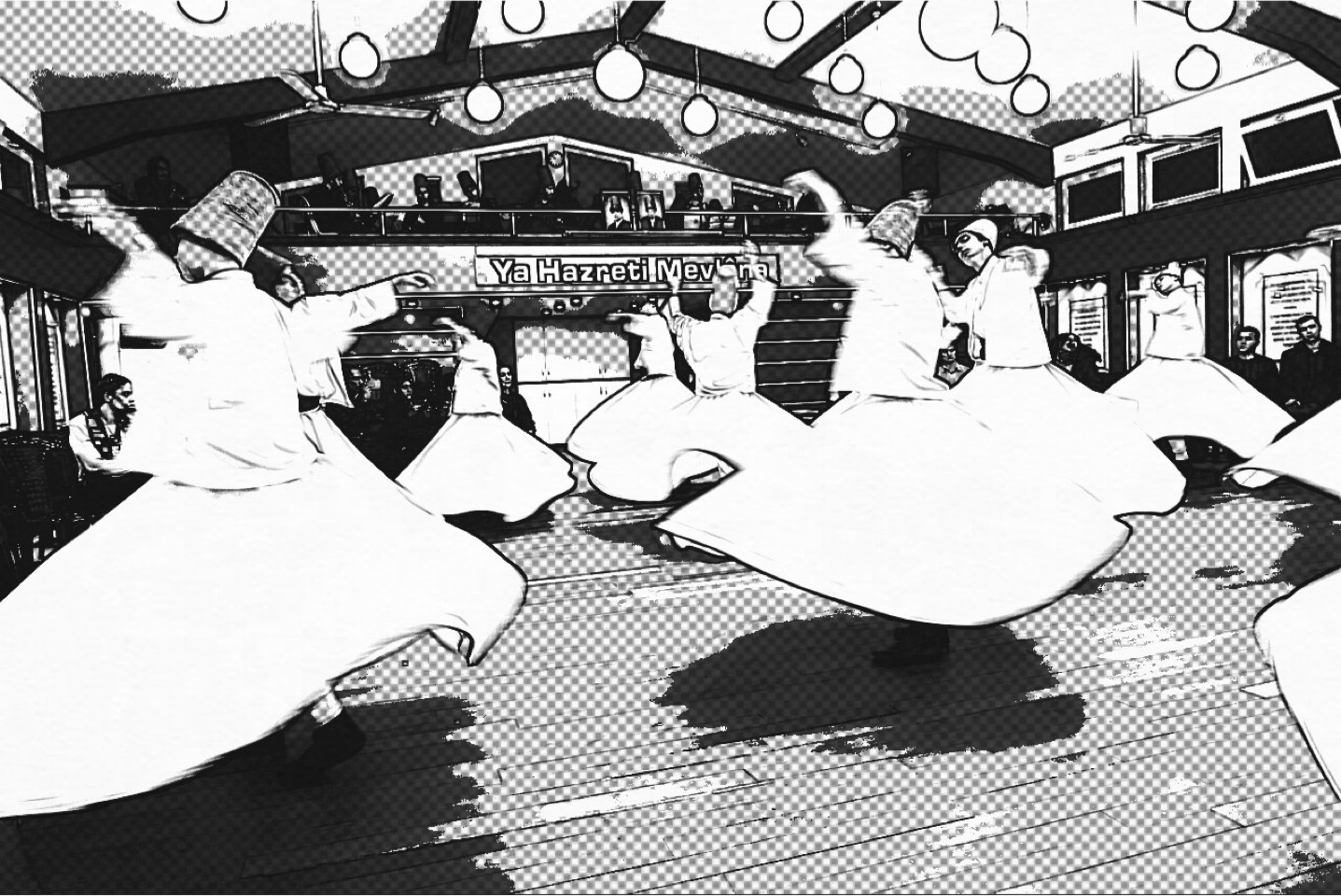
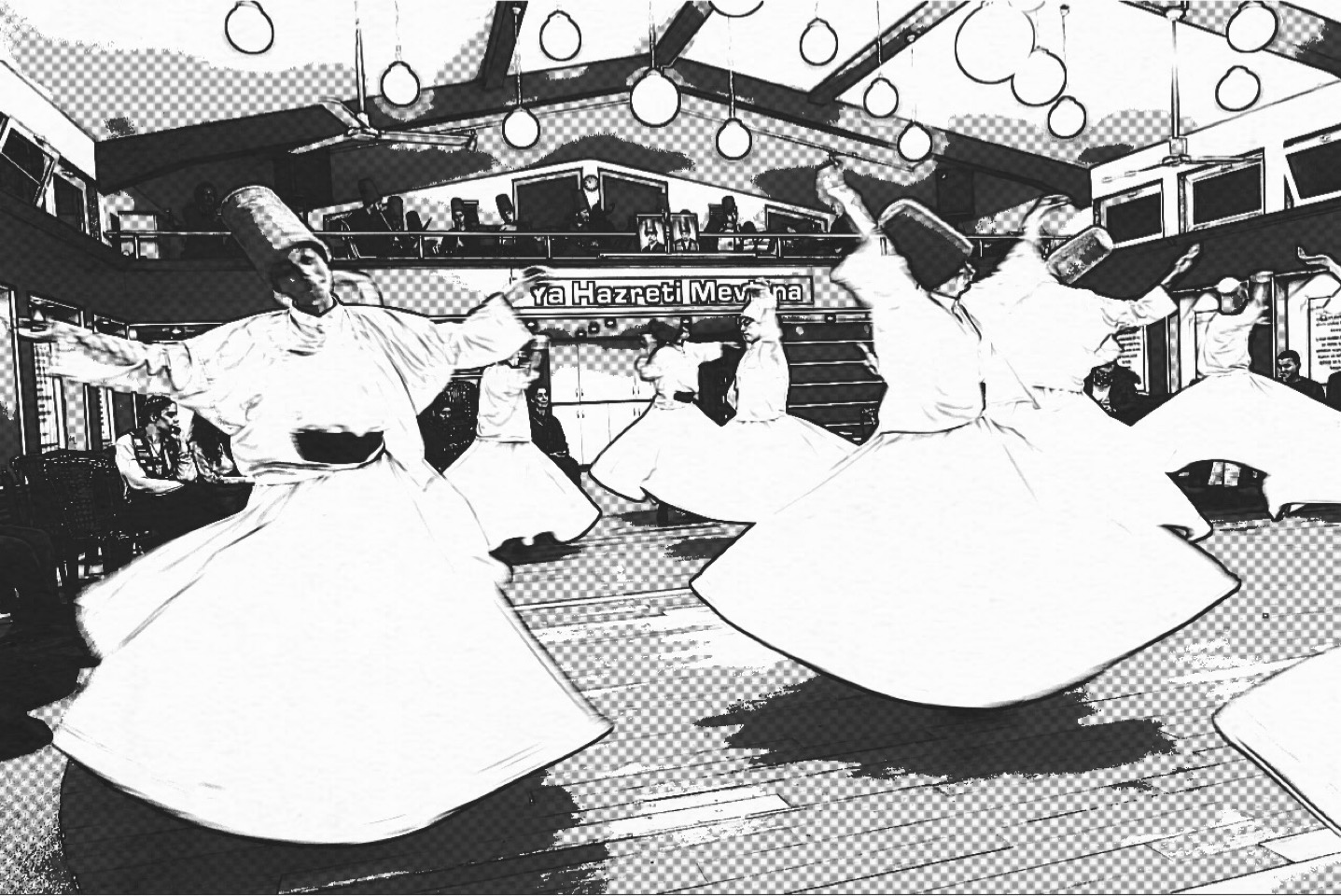
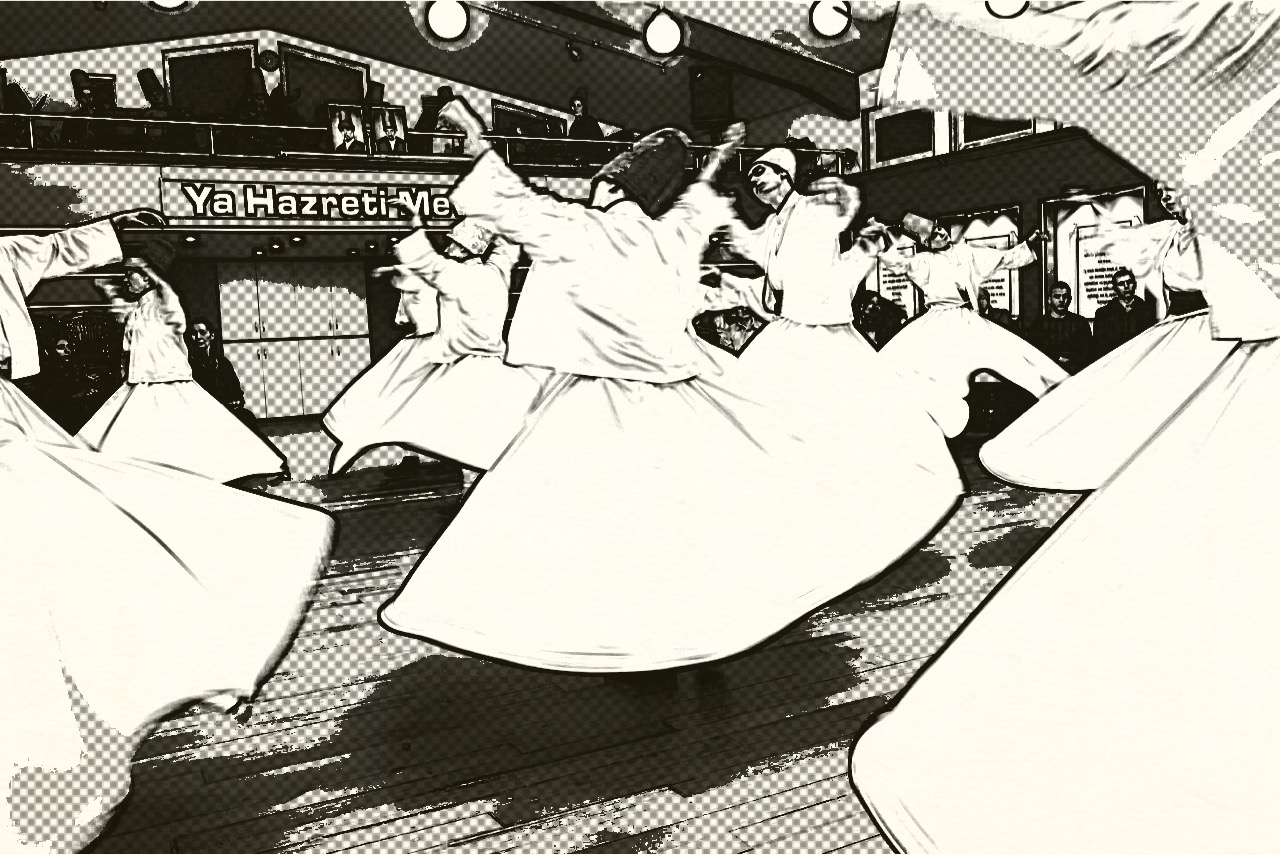
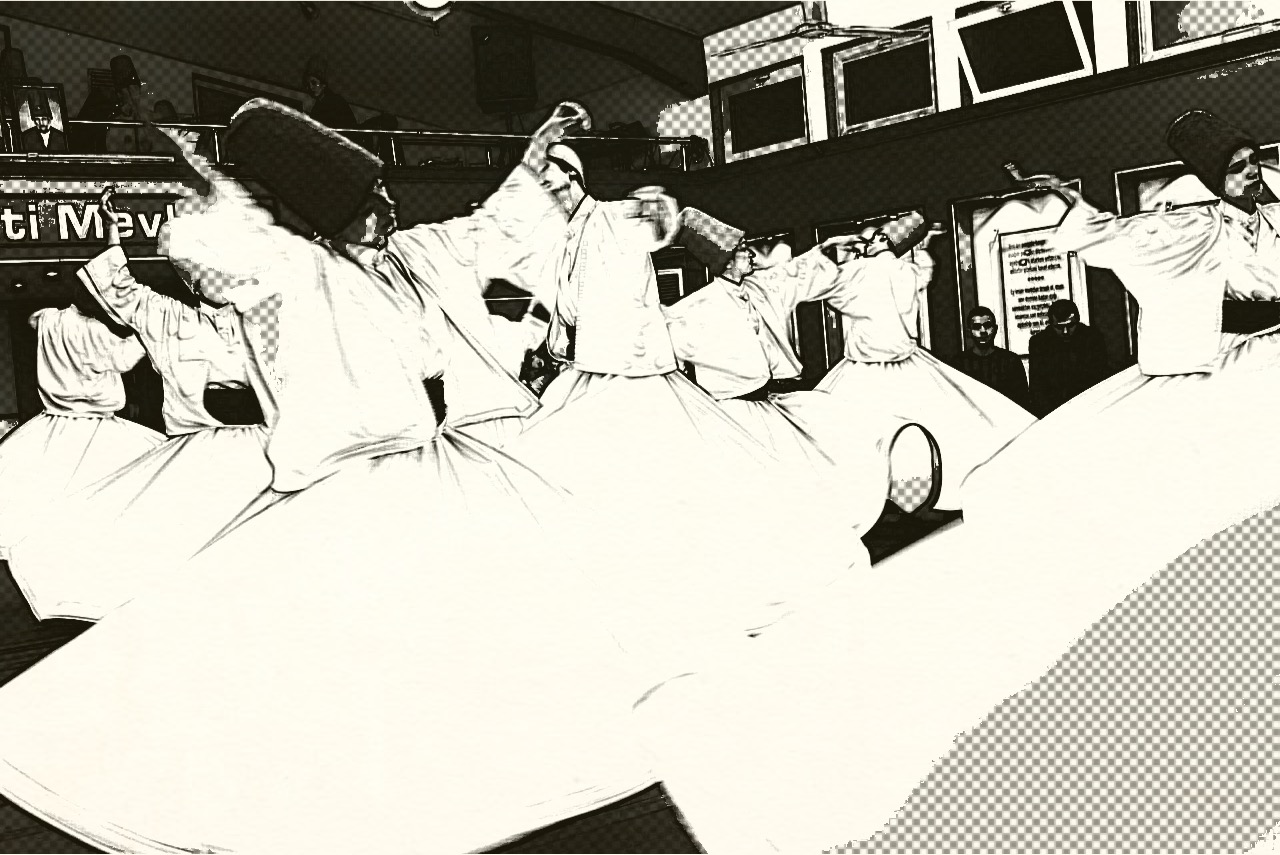
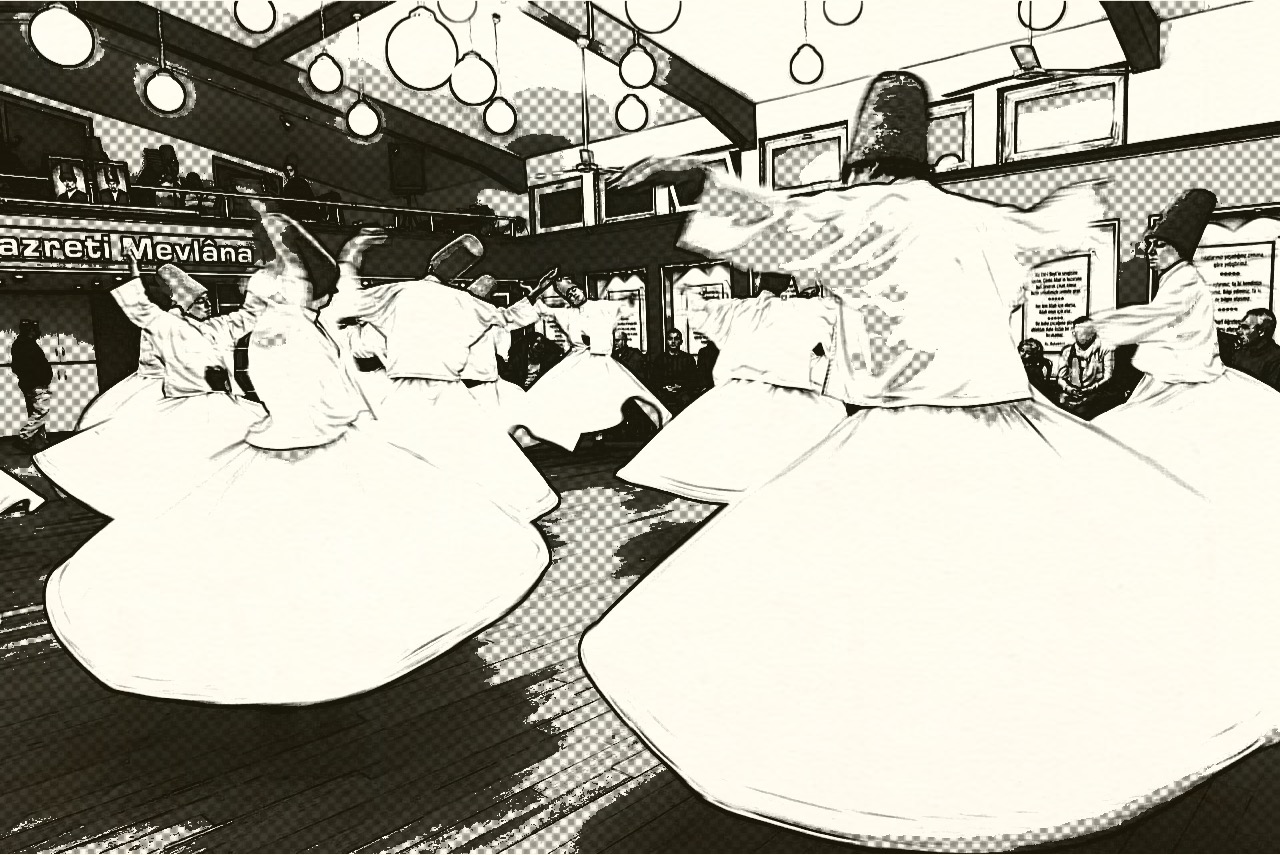
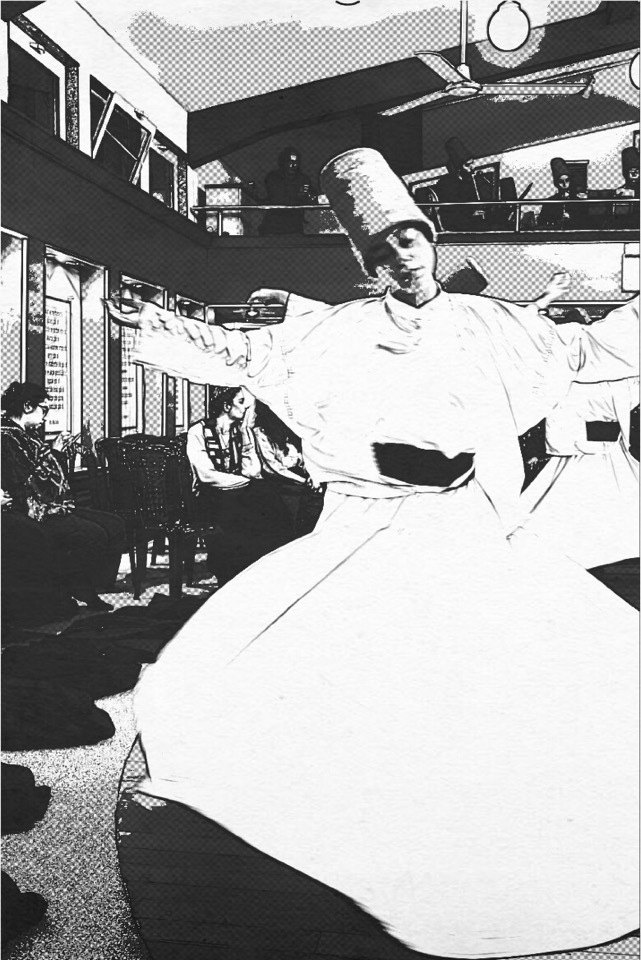
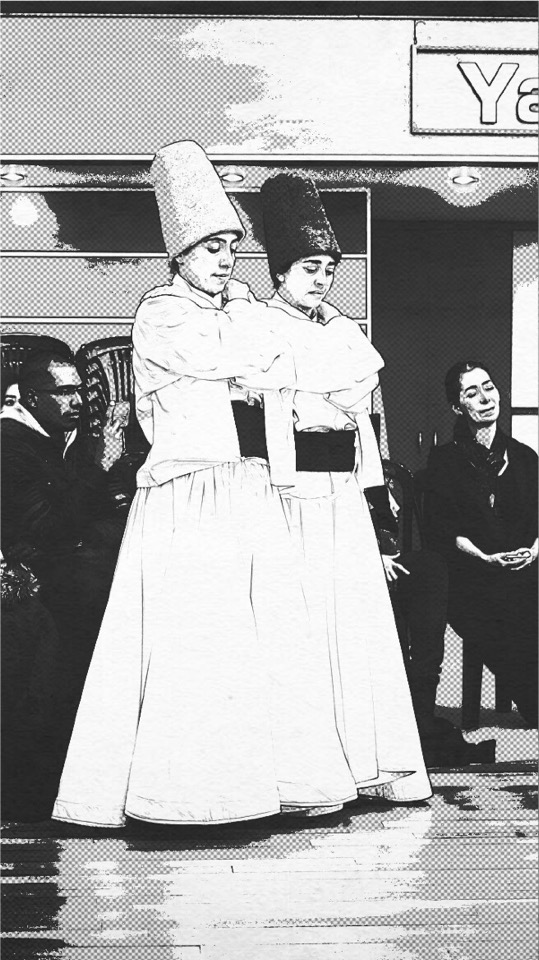
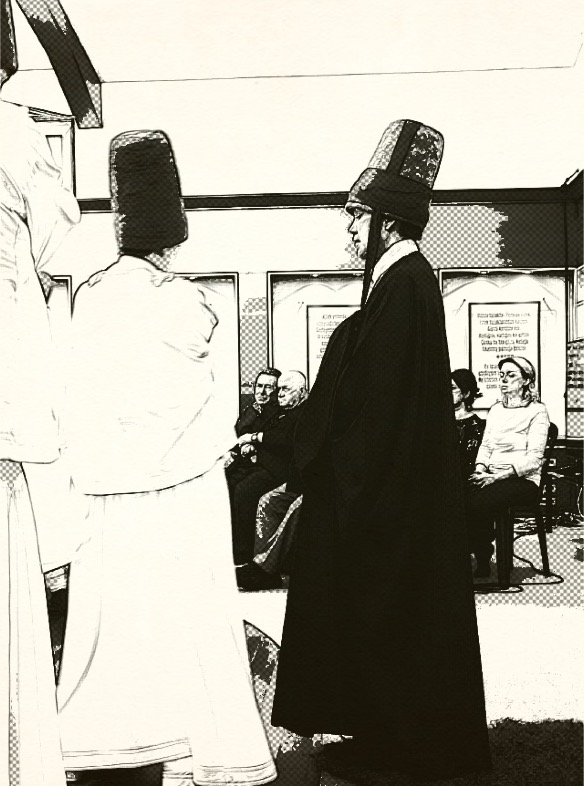
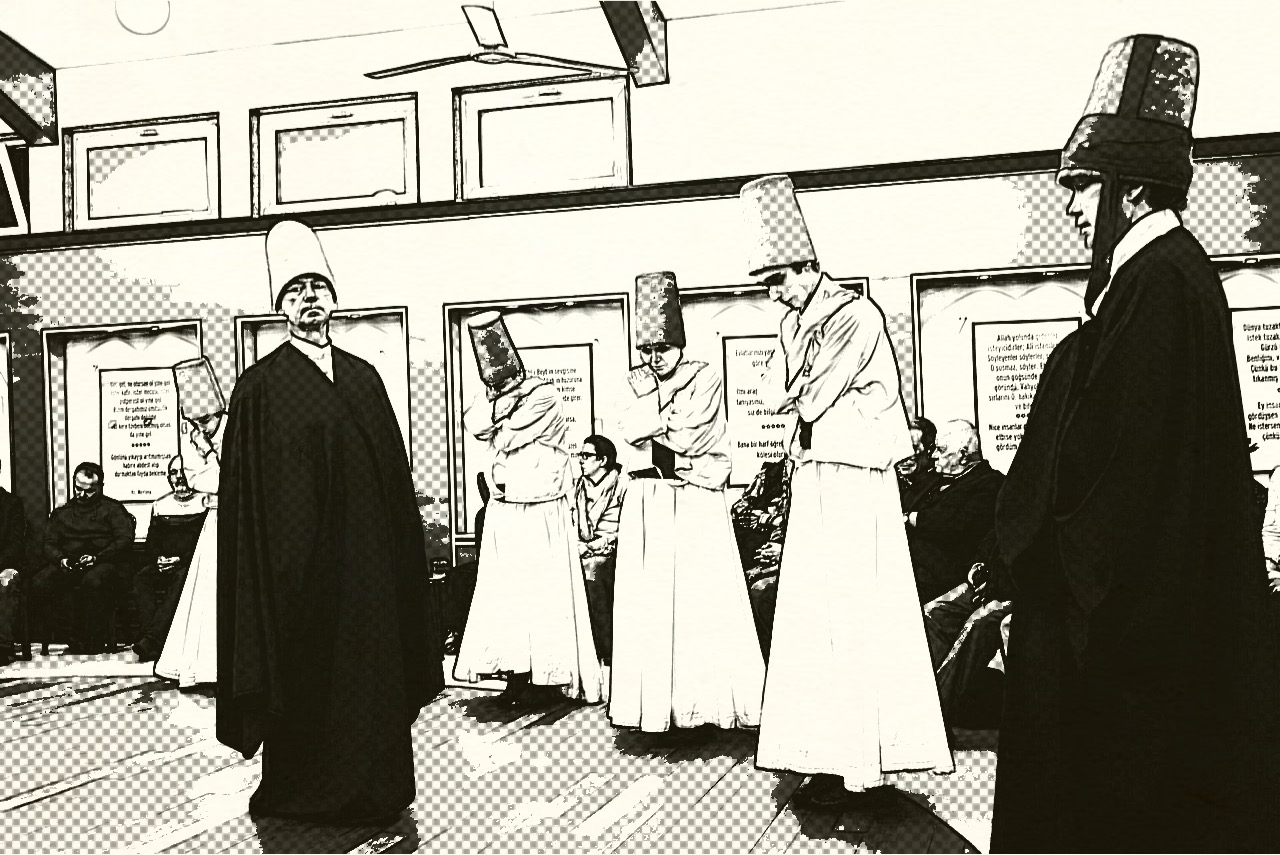


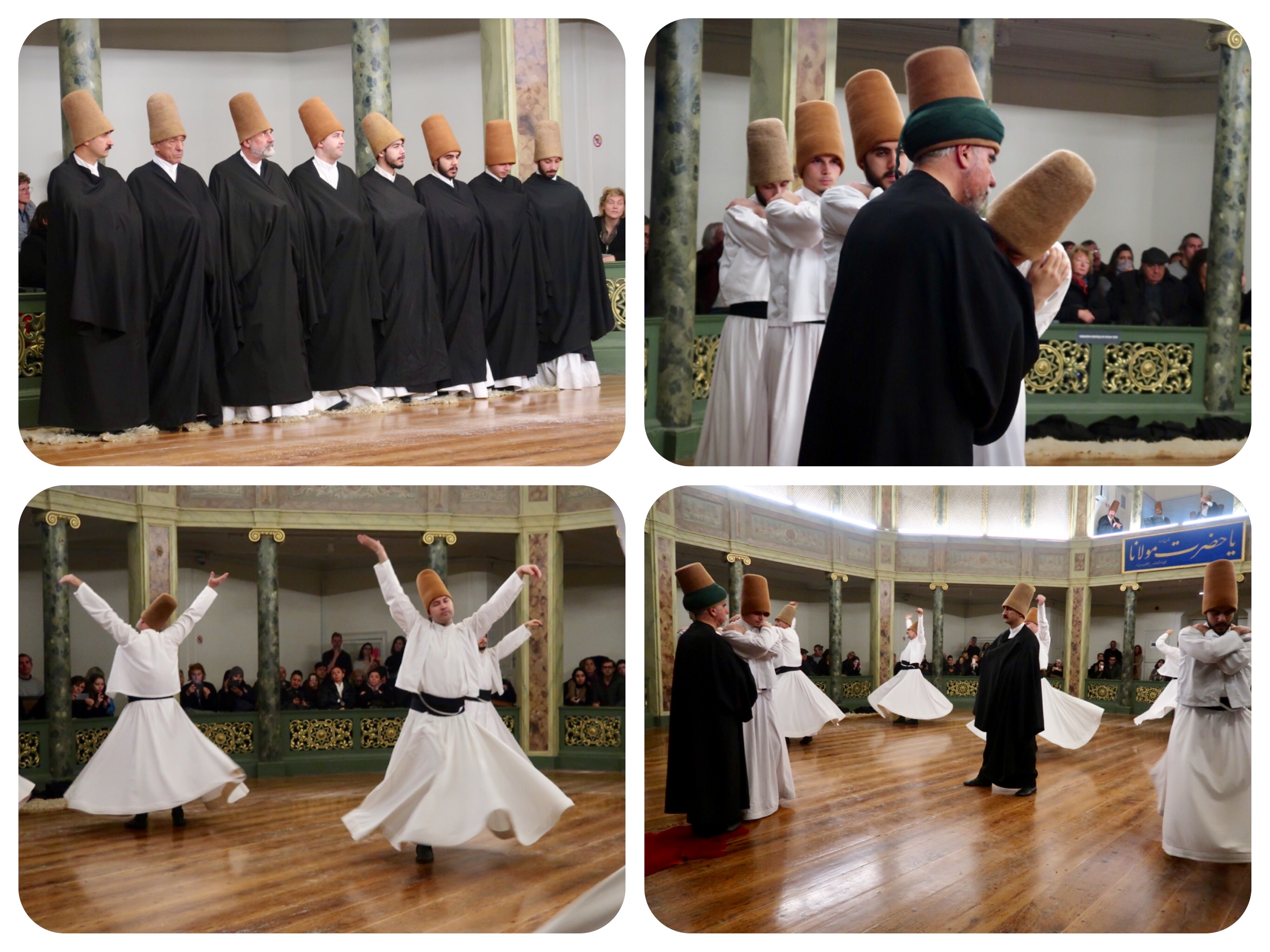
The Sufi Women Whirling Dervishes Of Istanbul
Perhaps the most well known Sufi around the world is the poet Rumi.
Rumi was born in September 1207, with the name of Jalāl ad-Dīn Muhammad Rūmī.
Later he became known as Mevlânâ or Mawlānā, which means “great mystic and teacher,” or simply as Rumi.
Rūmī wrote poetry in Persian, the language of his birth, as well as in Arabic, some in Turkish, because he lived in Konya,Turkey for most of his life, and a little in Greek.
He was well respected by the community in Konya, where he lived and preached the wisdom of Sufism.
His soul connection with Shams, a wandering Sufi dervish and a powerful mystic, came to a tragic end.
Rumi’s youngest son hired a murderer fo kill Shams and dispose of his body in the courtyard’s well.
Rumi’s elder son Walad continued in his father’s footsteps and transcribed many of his public lectures.
Sufism is a deeply spiritual practice based on the Koran.
Sufism is not focused on appearances or diet.
The women do not veil themselves, nor cover their hair.
It is based on love, love for all and for Allah or God, because you cannot really love God if you despise any of God’s Creations.
A Sufi strives to discover her own soul and to have a direct experience of God, through self development and becoming absorbed in the Infinite.
The Sufi museum in Istanbul is called the Galata Melevi Museum.
It was built in the year 1491.
It used to be a Sufi Tekke, or lodge, in which Dervishes lived and practiced.
Today it is a museum with lots of information about Sufism, with a circular hall in which once per week, you can see real practitioners whirl.
While visiting the museum, I read that a Sufi striving to become a true master used to practice 1001 days of asceticism, in which she learns to fast, meditate, humble herself and learn to whirl, as a form of absorption in the Light.
It reminded me of the Buddhist monks who undergo 3 years 3 months 3 weeks and 3 days of meditation in total isolation, in order to reach enlightenment.
Modern day sufis do not go through these ascetic disciplines.
They are not monks nor nuns, they do not live in Dervish lodges and they only wear the Sufi long hats and dress in robes, for the once weekly Sema ceremony.
While Sufism existed a few hundred years before Rumi was born, the “Sema” ceremony, or the whirling Dervish dance, was started by Rumi.
During our days in Istanbul, we saw the Sema Ceremony by the Whirling Dervishes twice, once in the museum in the ancient circular hall, and the second time at the Silivrikapi Melvana cultural center and Sufi monastery on the outskirts of town.
The second ceremony was much more exciting for me, because it had both male and female Dervishes whirling.
Rumi did have a woman student and later more and more women were born into the faith, but for over eight hundred years, there were no women who did the whiling dance.
About eight years ago, the Sufi women of Istanbul approached the Sufi master Hassan Dede, and asked why they were not allowed to whirl.
Sufism always preached equality between genders, so why should women not participate in the ecstatic dance?
Hassan Dede, who passed away one month ago, (October 2018) agreed, and since then, female Dervishes have participated in the ceremony without discrimination.
In fact, on the night we visited the center, there were more women than men whirling.
The evening usually starts with a lecture or a talk by the Master, but since Hassan Dede just passed away and a new Sufi Master has not yet been assigned, they replayed recorded lectures by him at the start of the evening.
A Sufi Master is not assigned arbitrarily or by seniority.
The message of who will be the new master has to come in a mystical way.
At least five people in the congregation have to have the exact same dream, in order to name the new master.
In Buddhism, when a high Lama priest passes away, the monks start a search to find his new incarnation.
They carry with them the old Lama’s bowl, prayer paraphernalia and some personal items, and wait for dreams and clues as to where to search for the reincarnation.
Hassan Dede passed away only one month ago, but it is believed that soon, his spirit will decide who will be his successor and that he will convey this message to the five who are awaiting his appearance in their dreams.
The ceremony started with a repetitive chant of the name of God.
This is done in order to purify the heart.
It is believed that the heart is the house of God.
By repeating the word Allah (God) many times, we purify the heart of meaningless thoughts and grievances and make it ready for Divine Love.
The whole congregation chanted and sang together:
The women, with their beautiful long hair draped over their shoulders and backs, and a young kid with long curly hair, danced around practicing the dervish’s whirling movements.
There is lots of bowing at the ceremony.
They bow to the master, to the audience, to one another and to God.
That night, the master was a woman, looking very dignified and spiritual in her long headgear.
Every object and every being in the Universe is constantly revolving.
On the subatomic level, we observe the revolution of the electrons, protons and neutrons within the atoms.
Similarity, planets are constantly revolving and as humans, our very existence is in a state of revolution.
The atoms that make up our bodies revolve, as do the structural elements of our body, the revolution of our blood, the earth and the cycle of life and death.
However, all of these are natural, unconscious revolutions.
Man is the possessor of a Divine mind and great intelligence.
Thus the "whirling dervish" or “Semazen” consciously participates in the shared revolution of all beings.
The Sema ceremony represents a mystical journey of man’s ascent beyond the ego, beyond the conscious mind, to the Divine.
The rotation is a symbolic journey towards enlightenment, and it is done through turning round and round, arms open and outstretched.
What seems like it would make ordinary men dizzy, is performed by the Sufi mystics as a surrender practice and personal experience of divinity.
Turning towards the truth, the Sufi expands her heart to be full of love towards all, to let go of the rigid ego and find the spiral vortex of truth that will help her to arrive at perfection.
It is a powerful practice, that puts you in trance as you listen to the soulful flute, reeds, strings, chanting and drumming.
The Sufis strive to offer only love and to be of service to the whole of creation, to all creatures without discrimination as to different beliefs, races, classes and nations.
As I watched them, I could not help but feel that the Sufis whirled like planets in the cosmos....their white dresses created wind, as they danced by me.
It almost felt like they were the ones holding up our planet earth on their dainty hands.... gracefully twirling.... looking so beautiful.... their faces so serene.
The Sema ceremony of the whirling Dervishes has seven stages.
(7 is the number of days in the week, symbolizing the seven days of creation).
Part One - The Dervishes enter with their headdresses (the ego's tombstone), and their white skirts (the ego's shroud), covered in black cloaks.
They then remove their black cloaks, symbolizing being spiritually reborn to the truth.
They walk with careful steps a mindful, circular walk.
Their arms are folded crisscrossed across their chests, representing the number one and God's unity.
While whirling they slowly open their arms, their right hand directed towards the skies ready to receive God's beneficence, the left hand turned toward the earth, giving back the blessings they receive.
They start turning from the right side to left, rotating counterclockwise around the heart.
Revolving around the heart, from right to left, they embrace all of mankind, all of creation, with affection and love.
It starts with a chant, "Nat-I Serif" to the Prophet, who represents love, and all Prophets before him.
To praise them is to praise God, who created all of them.
Part Two - a drum sound, symbolizing God order in the Creation of all that is.
The sound of the drum calls upon the Eternal Being.
Part Three - an instrumental improvisation called, "taksim," with a reed called a "Ney."
It represents the first breath which gives life to everything, The Divine Breath.
Part Four - The dervishes greet each other and do a circular walk, "Devr-i Veled," with the accompaniment of a music called "Peshrev."
They do it three times.
It symbolizes a salutation to the soul, which is concealed by shapes and bodies.
Part Five - The Sema - the whirling.
It consists of four rounds, called salutes or "Selams.”
The first salute represent man's birth to the truth with his whole being, feelings and mind.
The second salute expresses the rapture of man, witnessing the splendor of creation, in front of God's greatness and omnipotence.
The third salute is the transformation of rapture into love, and the freedom of mind to love.
It is a complete submission, an annihilation of self and an absorption into the loved one.
This is unity with the Divine.
This state of ecstasy in Buddhism defined as "Nirvana", is called in Islam "Fenafillah."
However, the aim of Sema is not to arrive at a state of unbroken ecstasy and loss of conscious thought.
At the end of this salute, the Sufi consciously returns back to the form, arms crossed symbolizing a Unity with God.
The fourth salute is the conscious return to their tasks on earth.
The whirling dervishes may reach a state of "Fenafillah," or Nirvana, but they return to their tasks in creation.
At the end of this spiritual journey and their ecstatic ascent, they remember that after all, they are servants of God, of His teaching, of His Prophets and of all of creation.
Part Six of the Sema ends with a reading of the Quran and especially of the verse from sura Bakara 2, verse 115:
“Unto God belong the East and the West, and wherever you turn, you are faced with God. He is All-Knowing, All-Embracing.”
Part Seven is a prayer for the peace and rest of the souls of all teachers, all Prophets and all seekers.
The evening of the whirling Dervishes finished with a blessing.
A women from the congregation stood up and said:
“Dear Honored guests,
Thank you for gracing us with your company tonight.
As you leave and go on your way, may the Divine Light be with you always!
May the Divine Light be in front of you,
May the Divine Light be below and above you,
May it walk behind you and be in your heart always!”
Tears welled up in my eyes as I heard this.
I remembered that over two months ago, before we set out to start walking the Via Francigena at the Canterbury Cathedral, the Archdeacon of Canterbury gave us the pilgrims’ blessing.
She said it in almost exactly the same words.
She asked God to watch over us, to walk below and in front of us to smooth our path and to show us the way, to walk beside us so we shall encounter only the Divine in all whom we meet, to walk above us in order to inspire us, and to walk behind us to protect us....
I will end with a quote that I recently read about how Sufis look at people.
“Sufis do not judge people by how they look or even by who they are.
When a Sufi looks at someone, she keeps both her eyes CLOSED, and instead opens her third eye - the eye that sees only the INNER realms.”
From Turkey, I am sending you love and light,
Tali
https://youtu.be/XtDdGRiwRw8
P.S.,
When I have better internet, I will post a short video of the Whirling Women Sufis.